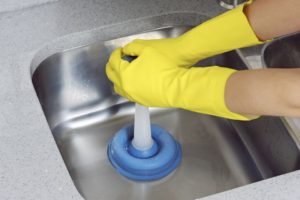Why You Need More than One Plunger
By Wilmer Romero on Oct 17, 2017 in Sewers & Drains
Why You Need More than One Plunger
When is a clogged drain REALLY clogged? When you can’t clear the drain on your own.
So, before you even think about calling it quits next time or right now if you’re currently battling an obstructed drain, consider how having the right plunger for every occasion can spell the difference between success and failure.
 For starters, there are 3 basic types of plungers:
For starters, there are 3 basic types of plungers:
- The classic wooden handled, red rubber bell plunger is most often called the cup plunger. It’s designed for use with flat drains like those in your tub, shower, or kitchen sink. It’s not terribly effective with toilets, however, since the large, flat opening makes it difficult to create a tight seal.
- For best results with your toilets, reach for your flange plunger, named for its narrow flange (or opening). In this case, smaller is better for creating a tight seal around a toilet bowl opening or other small drains with a curved surface.
- A bellows plunger has a spring-like head and multiple pleats – just like an accordion – to give it extra plunging power. It’s the plunger of choice when working from an angle.
A few more tips for the wise:
- Never plunge after using a chemical drain cleaner that can splash back and injure you. At the same time, be sure to wear rubber gloves.
- The less water in the sink or bowl, the less mess you’ll create when plunging.
- The tighter you seal the drain with your plunger, the greater the plunging power due to increased water pressure.
Does having the right plunger guarantee you’ll succeed the next time you face a clogged drain problem? Unfortunately, no. But you’re not alone – not with Your 1 Plumber to provide the help you need no matter how small or large the problem.

Post a Comment
You must be logged in to post a comment.